Jiayun Luo
Crowdsource, Crawl, or Generate? Creating SEA-VL, a Multicultural Vision-Language Dataset for Southeast Asia
Mar 10, 2025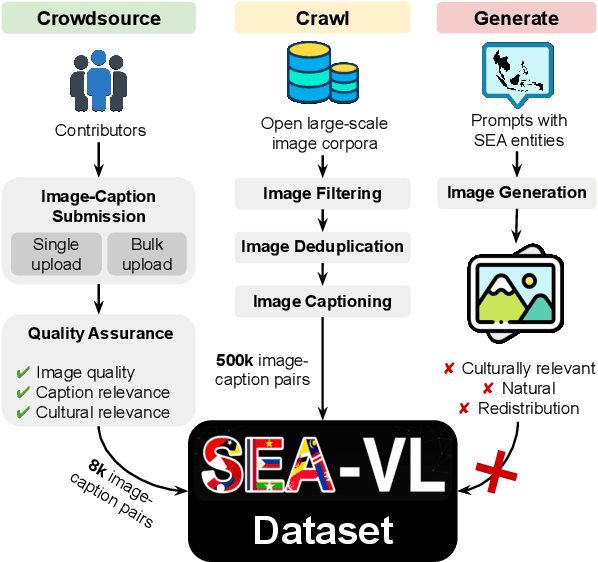
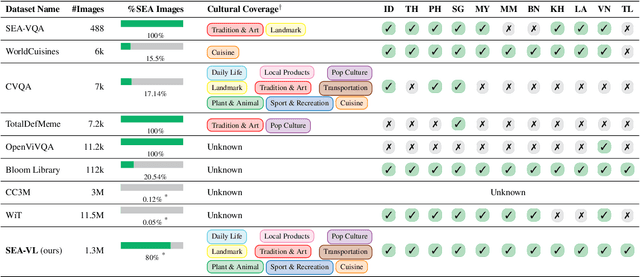


Abstract:Southeast Asia (SEA) is a region of extraordinary linguistic and cultural diversity, yet it remains significantly underrepresented in vision-language (VL) research. This often results in artificial intelligence (AI) models that fail to capture SEA cultural nuances. To fill this gap, we present SEA-VL, an open-source initiative dedicated to developing high-quality, culturally relevant data for SEA languages. By involving contributors from SEA countries, SEA-VL aims to ensure better cultural relevance and diversity, fostering greater inclusivity of underrepresented languages in VL research. Beyond crowdsourcing, our initiative goes one step further in the exploration of the automatic collection of culturally relevant images through crawling and image generation. First, we find that image crawling achieves approximately ~85% cultural relevance while being more cost- and time-efficient than crowdsourcing. Second, despite the substantial progress in generative vision models, synthetic images remain unreliable in accurately reflecting SEA cultures. The generated images often fail to reflect the nuanced traditions and cultural contexts of the region. Collectively, we gather 1.28M SEA culturally-relevant images, more than 50 times larger than other existing datasets. Through SEA-VL, we aim to bridge the representation gap in SEA, fostering the development of more inclusive AI systems that authentically represent diverse cultures across SEA.
Barking Up The Syntactic Tree: Enhancing VLM Training with Syntactic Losses
Dec 11, 2024Abstract:Vision-Language Models (VLMs) achieved strong performance on a variety of tasks (e.g., image-text retrieval, visual question answering). However, most VLMs rely on coarse-grained image-caption pairs for alignment, relying on data volume to resolve ambiguities and ground linguistic concepts in images. The richer semantic and syntactic structure within text is largely overlooked. To address this, we propose HIerarchically STructured Learning (HIST) that enhances VLM training without any additional supervision, by hierarchically decomposing captions into the constituent Subject, Noun Phrases, and Composite Phrases. Entailment between these constituent components allows us to formulate additional regularization constraints on the VLM attention maps. Specifically, we introduce two novel loss functions: (1) Subject Loss, which aligns image content with the subject of corresponding phrase, acting as an entailment of standard contrastive/matching losses at the Phrase level; (2) Addition Loss, to balance attention across multiple objects. HIST is general, and can be applied to any VLM for which attention between vision and language can be computed; we illustrate its efficacy on BLIP and ALBEF. HIST outperforms baseline VLMs, achieving up to +9.8% improvement in visual grounding, +6.3% in multi-object referring segmentation, +1.1% in image-text retrieval, and +0.2% in visual question answering, underscoring the value of structuring learning in VLMs.
A Survey of Computer Vision Technologies In Urban and Controlled-environment Agriculture
Oct 20, 2022

Abstract:In the evolution of agriculture to its next stage, Agriculture 5.0, artificial intelligence will play a central role. Controlled-environment agriculture, or CEA, is a special form of urban and suburban agricultural practice that offers numerous economic, environmental, and social benefits, including shorter transportation routes to population centers, reduced environmental impact, and increased productivity. Due to its ability to control environmental factors, CEA couples well with computer vision (CV) in the adoption of real-time monitoring of the plant conditions and autonomous cultivation and harvesting. The objective of this paper is to familiarize CV researchers with agricultural applications and agricultural practitioners with the solutions offered by CV. We identify five major CV applications in CEA, analyze their requirements and motivation, and survey the state of the art as reflected in 68 technical papers using deep learning methods. In addition, we discuss five key subareas of computer vision and how they related to these CEA problems, as well as nine vision-based CEA datasets. We hope the survey will help researchers quickly gain a bird-eye view of the striving research area and will spark inspiration for new research and development.
An Evaluation of Machine Learning and Deep Learning Models for Drought Prediction using Weather Data
Jul 06, 2021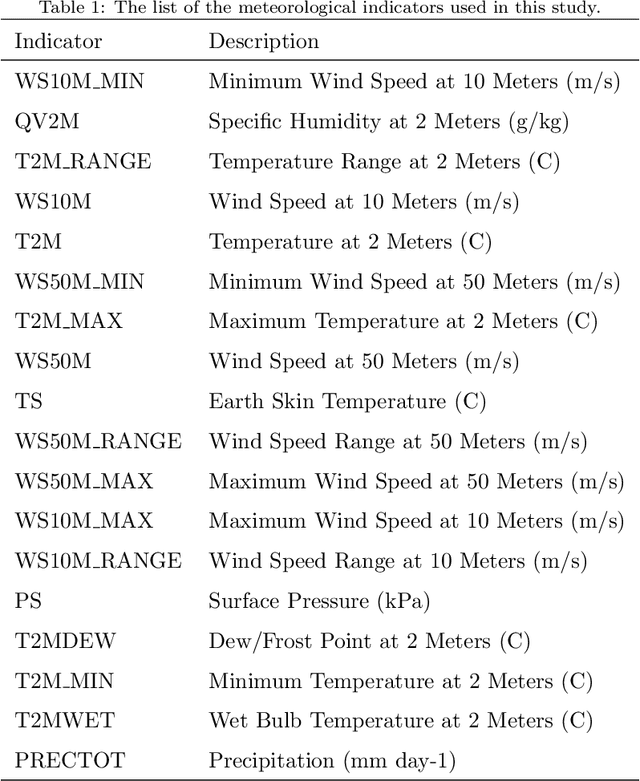
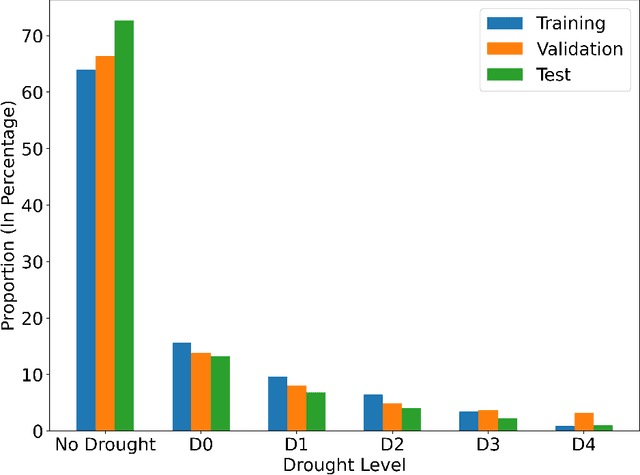
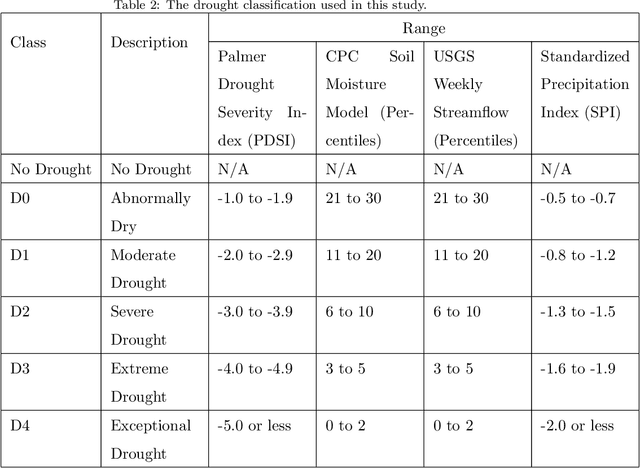
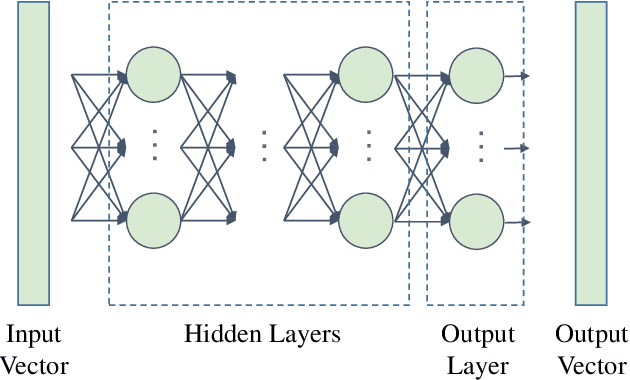
Abstract:Drought is a serious natural disaster that has a long duration and a wide range of influence. To decrease the drought-caused losses, drought prediction is the basis of making the corresponding drought prevention and disaster reduction measures. While this problem has been studied in the literature, it remains unknown whether drought can be precisely predicted or not with machine learning models using weather data. To answer this question, a real-world public dataset is leveraged in this study and different drought levels are predicted using the last 90 days of 18 meteorological indicators as the predictors. In a comprehensive approach, 16 machine learning models and 16 deep learning models are evaluated and compared. The results show no single model can achieve the best performance for all evaluation metrics simultaneously, which indicates the drought prediction problem is still challenging. As benchmarks for further studies, the code and results are publicly available in a Github repository.
Big Data for Traffic Estimation and Prediction: A Survey of Data and Tools
Mar 18, 2021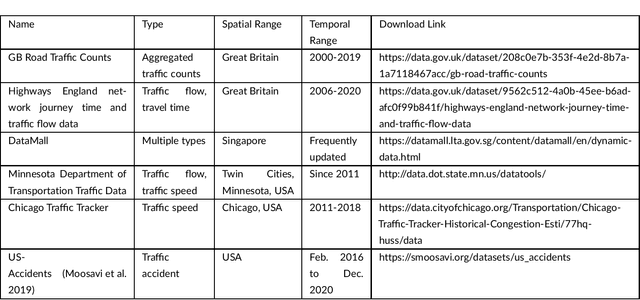
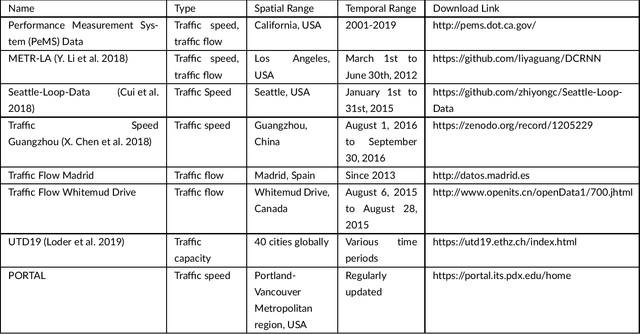

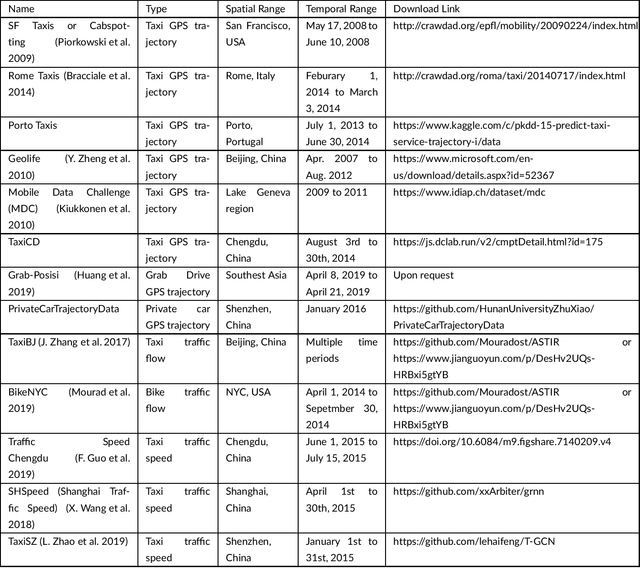
Abstract:Big data has been used widely in many areas including the transportation industry. Using various data sources, traffic states can be well estimated and further predicted for improving the overall operation efficiency. Combined with this trend, this study presents an up-to-date survey of open data and big data tools used for traffic estimation and prediction. Different data types are categorized and the off-the-shelf tools are introduced. To further promote the use of big data for traffic estimation and prediction tasks, challenges and future directions are given for future studies.
Graph Neural Network for Traffic Forecasting: A Survey
Feb 15, 2021
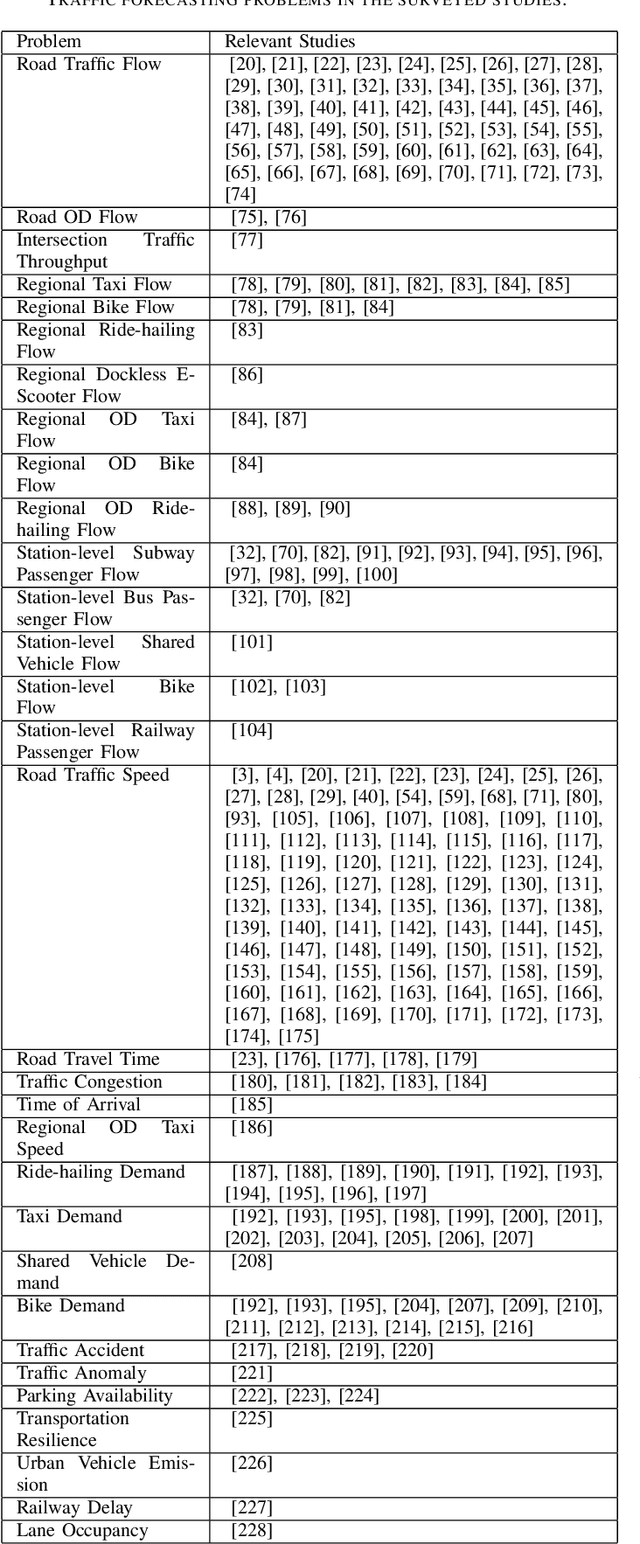
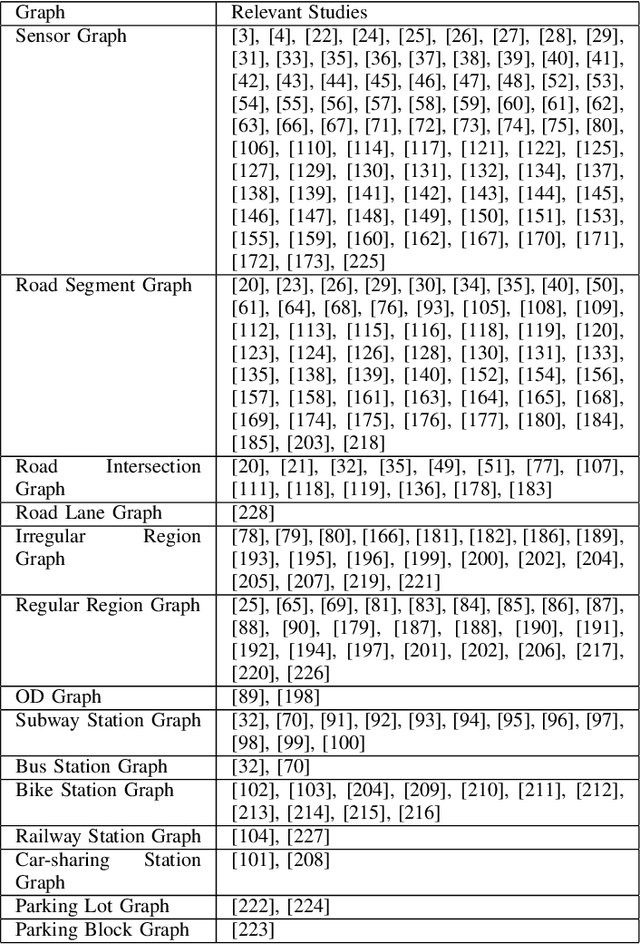
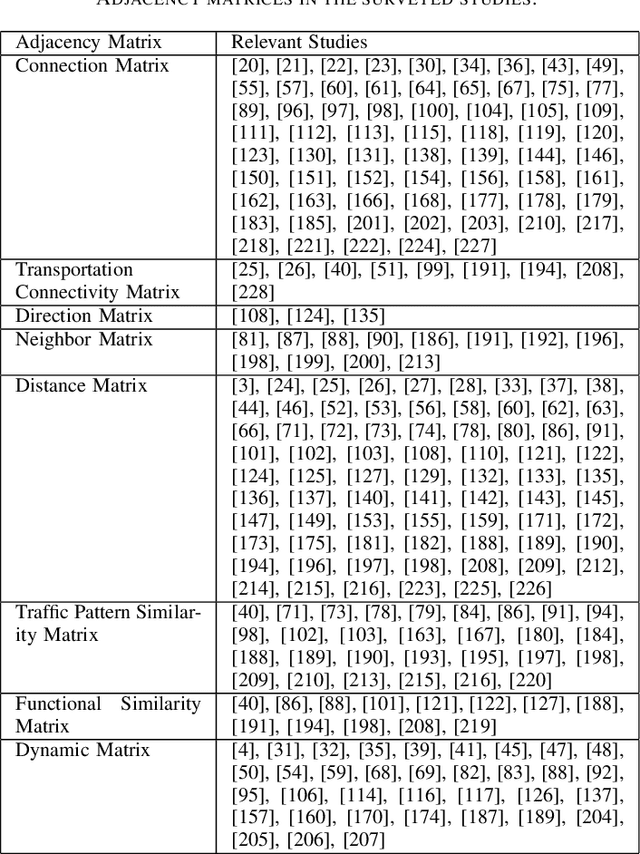
Abstract:Traffic forecasting is important for the success of intelligent transportation systems. Deep learning models, including convolution neural networks and recurrent neural networks, have been extensively applied in traffic forecasting problems to model spatial and temporal dependencies. In recent years, to model the graph structures in transportation systems as well as contextual information, graph neural networks have been introduced and have achieved state-of-the-art performance in a series of traffic forecasting problems. In this survey, we review the rapidly growing body of research using different graph neural networks, e.g. graph convolutional and graph attention networks, in various traffic forecasting problems, e.g. road traffic flow and speed forecasting, passenger flow forecasting in urban rail transit systems, and demand forecasting in ride-hailing platforms. We also present a comprehensive list of open data and source resources for each problem and identify future research directions. To the best of our knowledge, this paper is the first comprehensive survey that explores the application of graph neural networks for traffic forecasting problems. We have also created a public GitHub repository where the latest papers, open data, and source resources will be updated.
 Add to Chrome
Add to Chrome Add to Firefox
Add to Firefox Add to Edge
Add to Edge